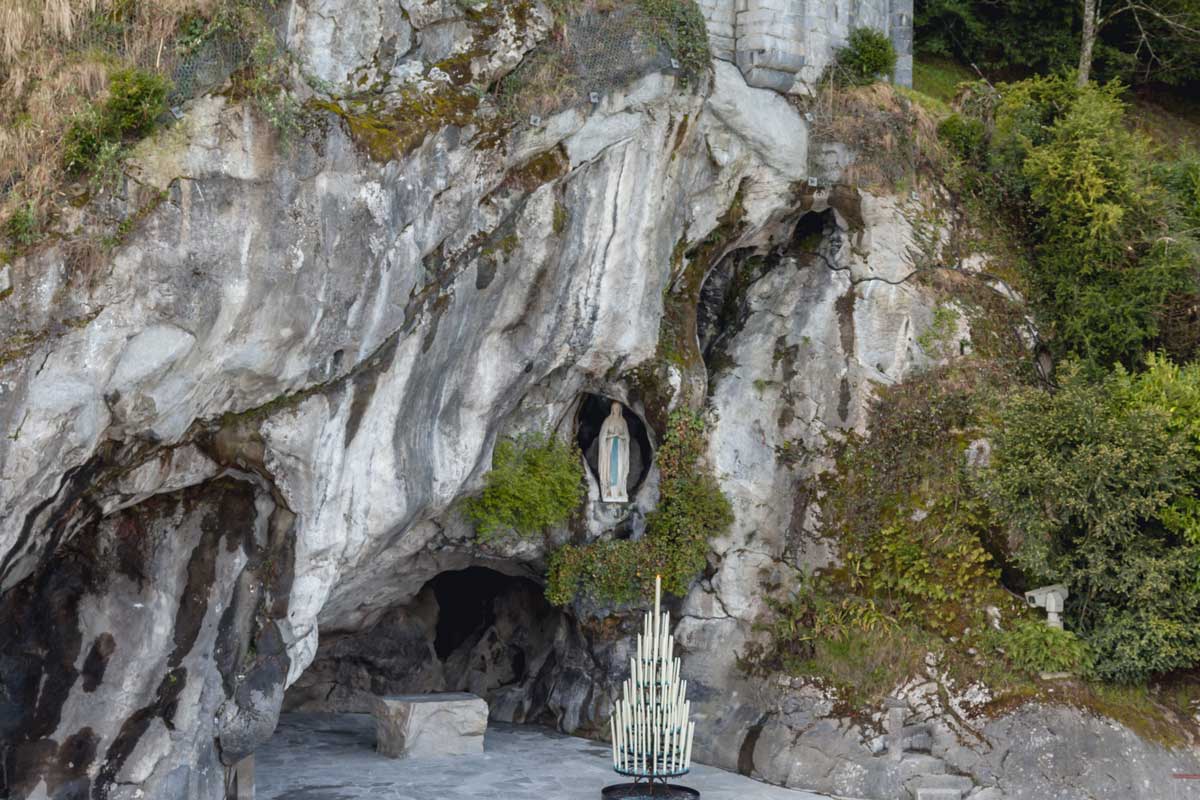
The Grotto of the Apparitions at Massabielle
The Grotto of Massabielle is a must for all visitors to the Shrine of Lourdes, whether they are ordinary visitors or believers. The visit to the Grotto is silent, most people touch the wall of the Grotto with their fingers in respect or to make a wish or a prayer. Processions are organised too for infirm pilgrims.
Indeed, this Grotto is the image of the invisible God who gives us the strength. “The Lord is my rock, my fortress, and my deliverer. My God is my rock, in whom I take refuge, my shield, and the horn of my salvation, my stronghold!” (Psaulm 18:2).
The Virgin Mary stood on the rosebush in the niche to tell us that she leads us to the Lord, she is the first on the way, but it is the Lord Christ that we must follow.
The Grotto of Massabielle is located downtown Lourdes and is dominated by the castle. The sun never penetrates this black rock. The Grotto is 3.80 metres high, 9.50 metres deep and 9.85 metres wide. It is a crevice in a 27-metre high rock face. The wall is smooth and damp in places. The cave is thus a simple limestone cavity. Apart from the visible part of the porch (where the altar is installed) and the skylight (where the statue of the Virgin is installed), the cavity has a karstic extension of about ten metres, making it a “real karstic cave” and not a simple rock shelter as it is regularly described.
Since the 9th apparition on 25 February 1858, a spring has been flowing in the cave. This spring was highlighted in 1974 and the water channelled into a reservoir under the basilicas. Pilgrims can drink the water at a temperature of 10°C, and they can also collect it from taps that have been moved several times to maintain an atmosphere of silence and recollection near the Grotto. They can also take part in the water gesture by washing their face, hands and forearms in the pool area (built in 1882 and whose location also changed to better accommodate sick pilgrims) located further right from the spring, with a large naturalist-inspired canopy over the pool area.
In 1861, Mgr Bertrand-Sévère Laurence, Bishop of Tarbes, bought the Grotto from the commune.
The statue of the Virgin in Carrara marble, sculpted by Joseph-Hugues Fabisch (his name is clearly visible on the pedestal), is placed at the top right of the grotto at a height of 2 metres, in a secondary cavity in the rock, called the Niche of the Apparitions. It was inaugurated on 4 April 1864, during the first procession officially organised by the Church, which brought together some 20,000 people including 200 priests.





